
You’ve probably never heard of War Tech Fighters, the unfortunately named space dogfighting game from Drakkar Dev and published by Green Man Gaming. I hadn’t before it landed on my desk. War Tech Fighters is a straight-up space combat sim with giant mechs and space fighters. It’s got pretty much everything a space junkie needs: atmospheric combat, asteroid fields, giant space stations, battleships, and one on one mech combat, both with ranged weaponry and giant swords. Honestly, the only thing you don’t do in War Tech Fighters is land on planets and explore them. But having every ingredient doesn’t necessarily make a recipe. Does War Tech Fighters manage to pull it off?
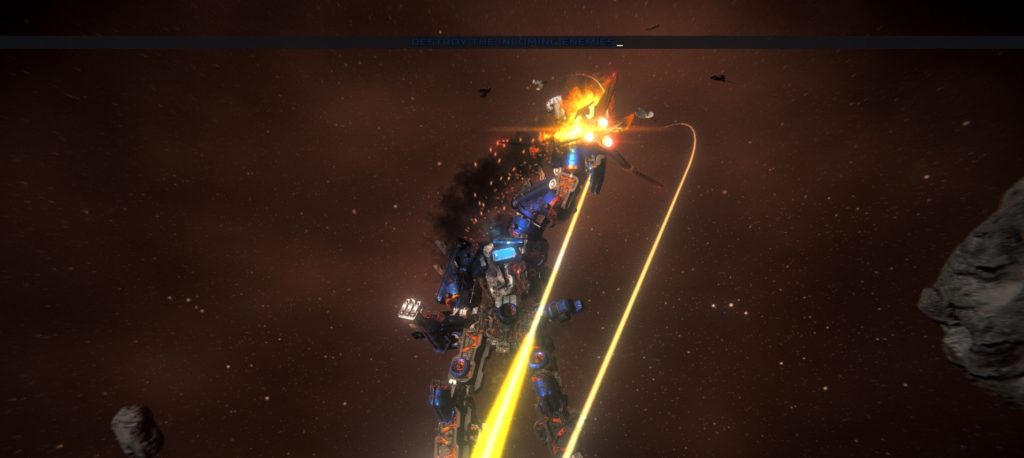
Space dog-fighting is a tricky business in gaming. There are some excellent complex sims out there like Descent: Freespace and the Wing Commander series. There are also a lot of casual titles such as Everspace for example. War Tech Fighters falls somewhere in the middle and ends up not quite casual, yet not quite complex. You are the Hebos rebels fighting the Zatros empire in a large space conflict in an unknown quadrant of the galaxy. It’s not the most creative storyline, but it’s a storyline. Gameplay is mission based and you start from a home base where you can modify your mech heavily, both with customizable paint options and a variety of weaponry that starts out roughly equivalent but can become spectacularly powerful. And that core gameplay is initially more compelling than I had anticipated.
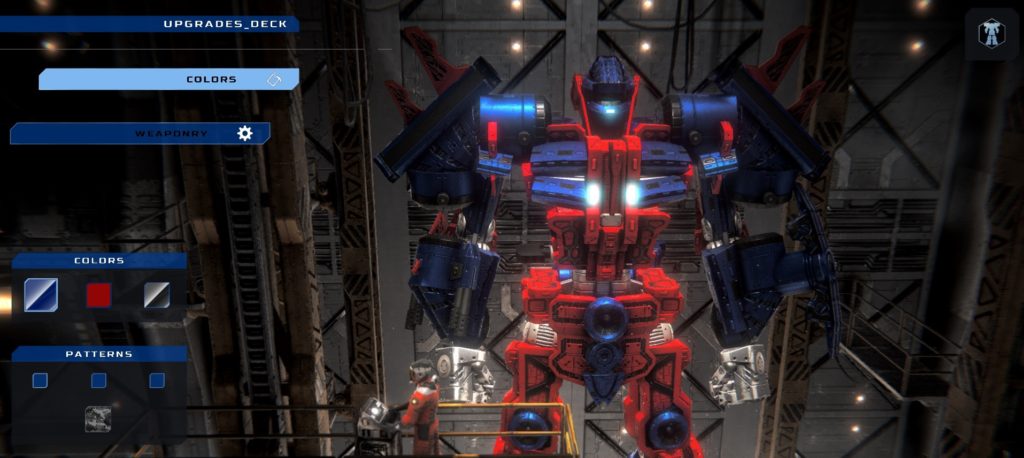
What Drakkar Dev seems to really have a grasp on is the cinematic experience in gaming. Your mech has the ability to engage in automatic close-quarters combat with enemy spacecraft. Once their power levels diminish enough, you simply press a button and your mech drops into a cinematic kill, impaling, punch, or kicking through enemies. It’s actually quite stunning at first. I was a bit surprised at the number and variety of animations for finishing moves available. It’s definitely something I haven’t seen often before. The platform launches at the beginning of the level, the debut of enemies, any major actions, everything has a cinema sequence, rendered in game with no noticeable slowdown. 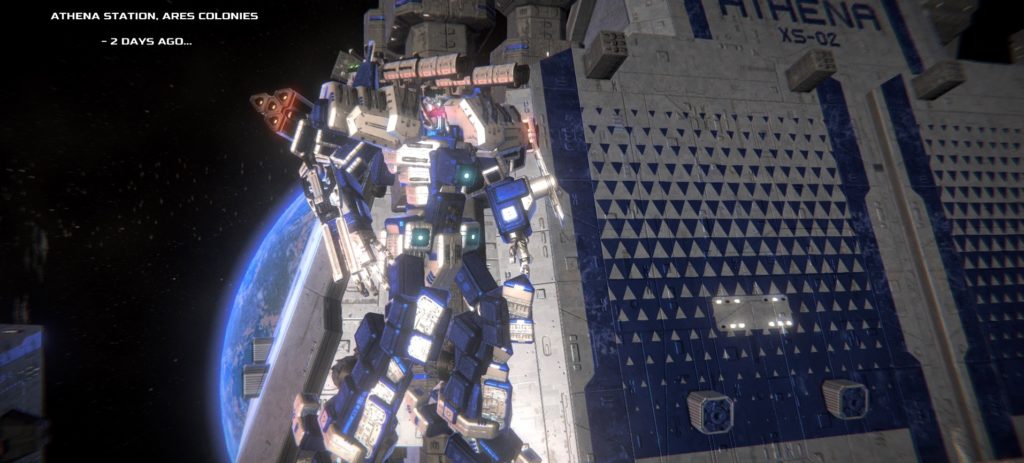
When you’re not watching your mech slice through metal spaceships like butter, you’re chasing ships around and hammering them with a gatling gun, heavy cannon, and a “Quantum Wave” which seems to me to be more like homing missiles than anything else. Once enemies are in your rather large targeting reticle, you simply start firing to lock on and you’ll automatically target the enemy until they’re dead or your energy runs out. There’s no ammo limit, but you have to let your power recharge, which can be dangerous in a high-intensity dogfight with six or more enemies! You can boost as well, but it drains your energy fast, and it’s the same bar as your weaponry. Running is rarely an option in War Tech Fighters, as you are virtually guaranteed to be hammered to death by missiles. You also have a shield, and you’d best learn to use it. The shield blocks most of the enemy fire when you pull it out, pretty impressive considering from a sheer area perspective, it only actually covers about 1/3 of your mech from one direction and you’re in a 360 degree fight with multiple fast-moving and versatile enemies. Good thing that robot is tough!
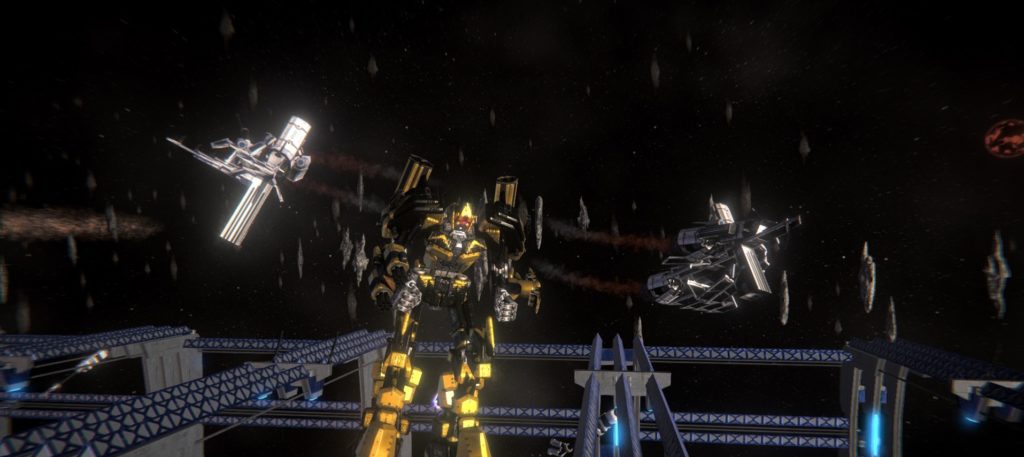
The downside of combat is that after a little while, you realize that the AI is pretty predicatable. Simply fly right into a cluster of ships and fire your gatling gun, drain them down to the point where you can kill one with a finishing move, skip the cinema, and auto-target the next ship. I found that by the third or fourth level, I was clearing out 6-8 ships in half the time and that the smaller ships were essentially no threat at all. They’re just fodder, which is a little disappointing. The same goes for any stationary enemies like mines or rotating gun platforms. Most can be shot from outside of lock-on range by simply aiming at them. No threat. The only enemies that posed a real challenge that I saw were other War Tech mechs, and unfortunately, they also have a predictable pattern, though much more health. Enemy mechs can easily kill you, unless you keep your shield up. I found that by simply quickly wiping out their accompanying squadron, spamming them with heavy cannon fire until they were at half life or less, then closing on them and dueling them, they died quickly and were virtually unable to hurt me. That being said, duels are kind of neat.
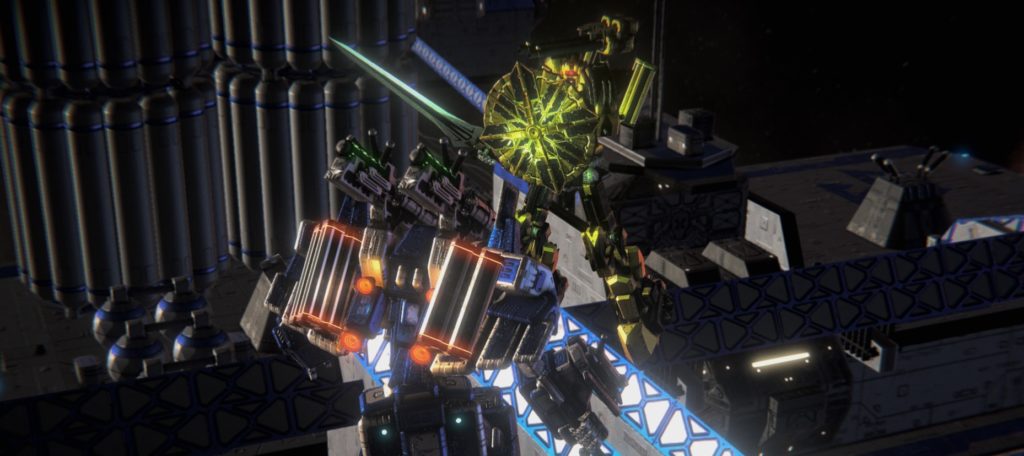
Close in with an enemy Zatros mech and if he’s weak enough, you can initiate a duel. You can block with a shield, attack with heavy and light attacks, and eventually cross swords, where you have to then move the icon into the ring before the time runs out. Manage to do that and the enemy is stunned, leaving them open to being hacked apart. Kill them and be treated to a cinema from the enemy’s perspective where you hack them open. Very cool, very cinematic. But just like the other cinemas, repetitive. There are only so many variations available and by level 6 I was skipping most all fatality cinemas. It’s still neat, though.

While War Tech Fighters is great from a cinematic perspective, it definitely lacks graphical polish. Most everything in the game is low detail with simply polygons and limited texture mapping. The game looks old. I’d say it looks easily ten years old, maybe even older. Perhaps it’s because there are so many good space games now, but from a visual standpoint, this game feels like a demo reel from an undergrad at a visual arts school. Spaceships are generic looking, Space lacks detail and refinement, visual effects are lacking particle effects, lighting is sub-standard. In the story segments, character portraits are noticeably lacking in detail and artistic skill. They’re fine for an indie title, but they’re not good, simply acceptable. Across the board the game simply looks old.
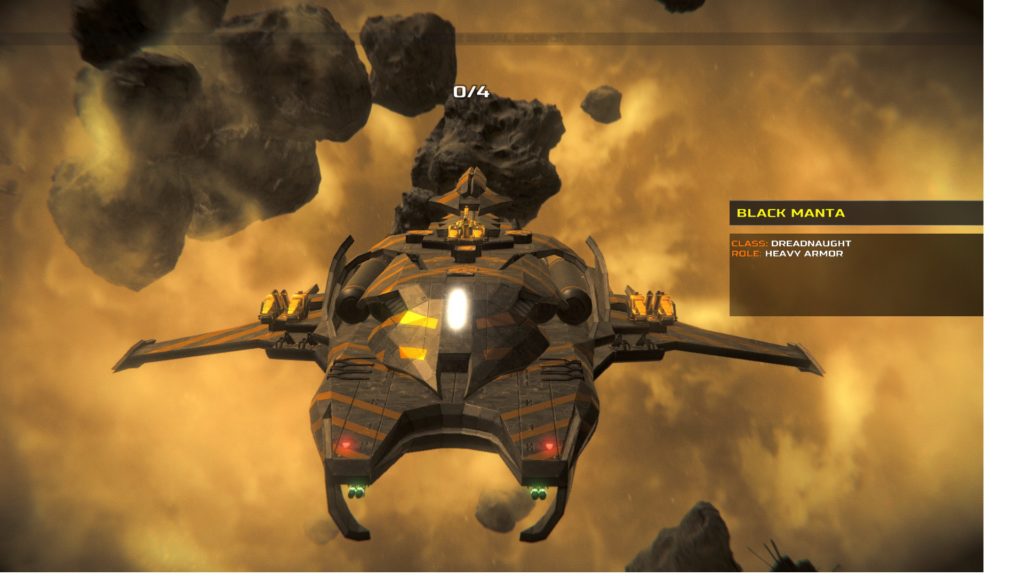
On top of the graphics, the way the over-the-shoulder camera follows you is extremely limiting and ends up causing some clipping issues, especially when you have to investigate space stations and get near objects. More than once I found my mech caught on the antennas protruding from a station while I tried to line up my mech to analyze a satellite. Once it took me at least 6 tries just to line up. I highly recommend using a controller to play this game, as keyboard controls were definitely clunky and I felt like the game was designed for dual stick controllers. Fortunately, the game does detect an Xbox One controller easily. Controls in general are less responsive than I’d like for a space shooter that’s seems like it’s supposed to be a bit frantic. Dodging missiles is just a matter of firing at an enemy and moving sideways, which works most of the time, but boosting away or out of the way rarely works. It’s an inconsistent feeling interface which definitely inhibits some of the better parts of the game. After a while, combat starts to feel tedious and you just want to move on to see the tepid war between the rebel Hebos and the Zatros empire be resolved.
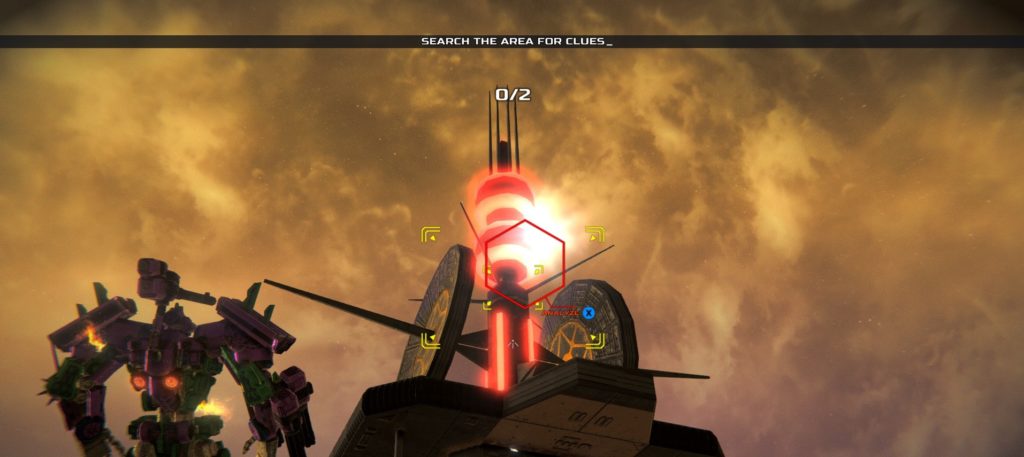
With the vast amount of upgrades and a variety of missions available, you’ll be able to spend quite some time with War Tech Fighters. Plus, you can make your mech look like the feature film version of Optimus Prime, which isn’t all bad. But the AI is overall pretty lackluster, and the gameplay, while definitely interesting, becomes stale after a few hours. Ultimately, Drakkar Dev has created a title that has the potential to be exciting but needs a bit more polish and a graphical upgrade. While the numberous cinemas certainly make the game more exciting, the core gameplay is a bit weaker than it should be. With all that in mind, it’s still a fun game though, more fun than it has any right to be, honestly. The core is there, and hopefully it gets expanded upon in the future, as the game has received numerous updates. At $20, it’s priced a bit high for what it is, but it’s certainly worth a look, especially if it goes on sale. It’s definitely a moderately entertaining game. Just don’t expect a gripping tale of interstellar war or a fully immersive space combat experience.
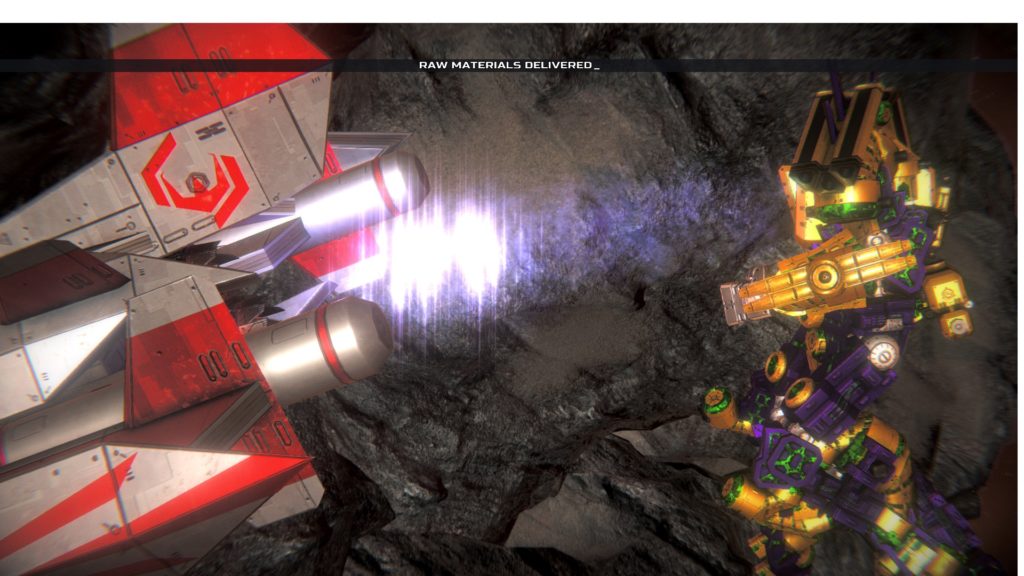
This review was based on a retail version of War Tech Fighters supplied by the publisher and running on an an I7-8700K with 16 GB of DDR4-3000 RAM, an Asus GeForce GTX 1080 ROG Strix graphics card, and an Xbox One controller connected via USB.

